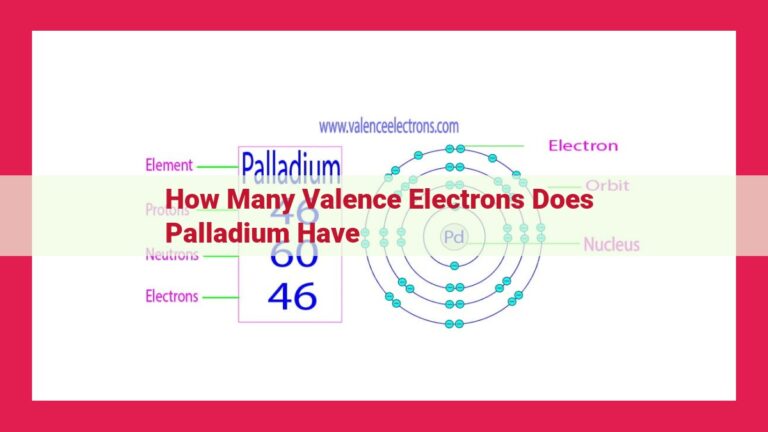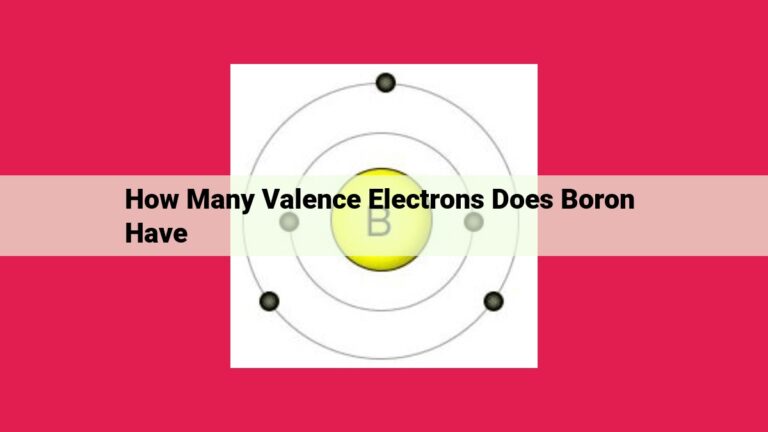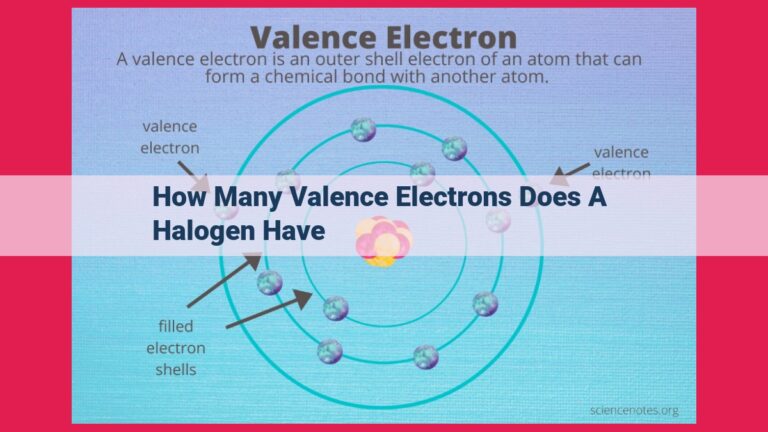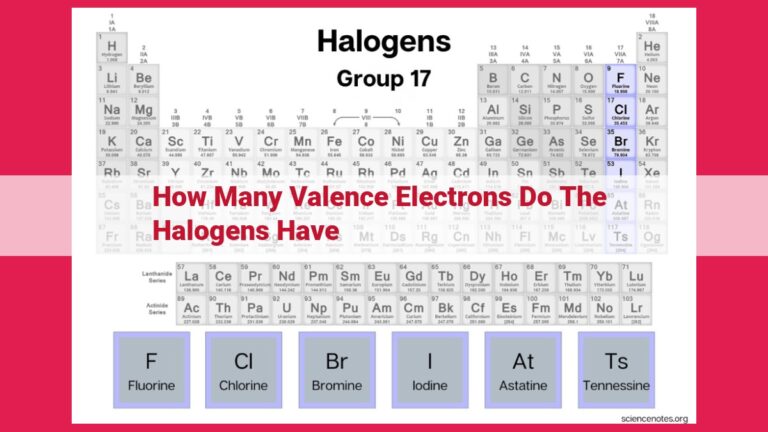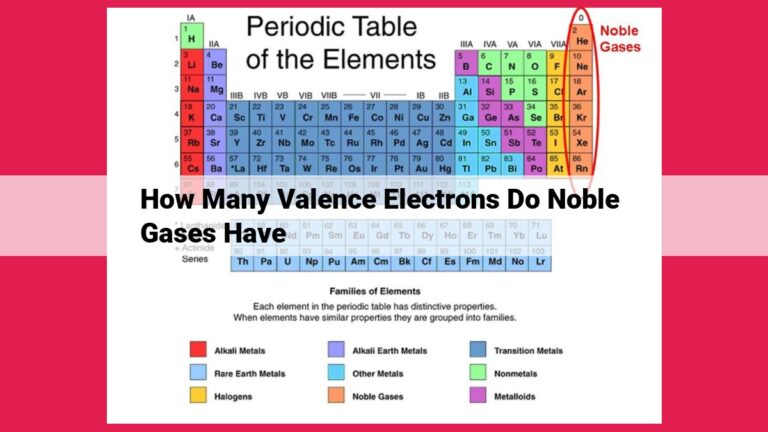Beryllium: Understanding Valence Electrons For Chemical Interactions
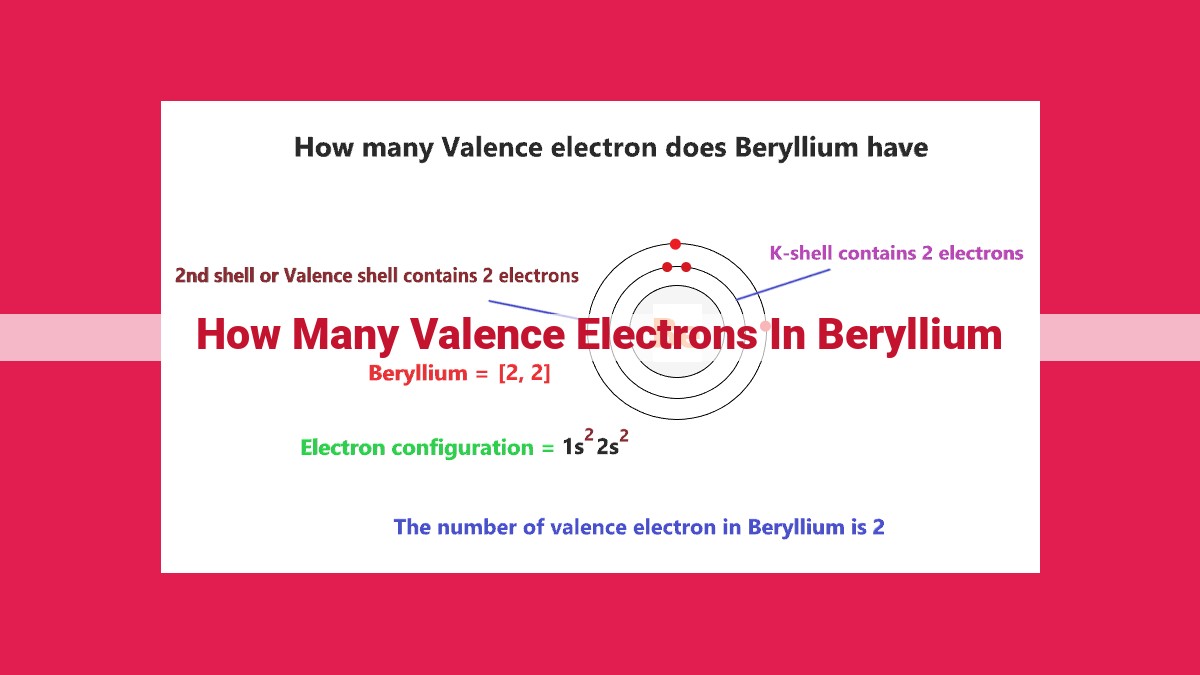
Beryllium, with an atomic number of 4, possesses two valence electrons. Valence electrons are crucial in understanding an element’s chemical characteristics because they occupy the outermost energy level and engage in interactions with other atoms. The electron configuration of beryllium is 1s² 2s², indicating two electrons in the 2s subshell. These two valence electrons contribute to the chemical bonding capabilities and reactivity of beryllium, enabling it to form compounds with various other elements.
- Introduce the concept of valence electrons as the electrons in the outermost energy level of an atom.
- Explain the importance of valence electrons in determining chemical properties.
Valence Electrons: The Key to Chemical Reactions
In the intricate world of chemistry, grasping the significance of valence electrons is crucial for unraveling the mysteries that govern how different elements interact. These elusive electrons, residing in the outermost energy level of an atom, hold the key to understanding why some elements readily form chemical bonds while others remain aloof.
The Significance of Valence Electrons
Picture the atoms as tiny celestial bodies, with electrons orbiting them like planets within distinct energy levels. The outermost layer, a bustling metropolis of electrons, is known as the valence shell. It is here that valence electrons reign supreme, dictating the chemical fate of their atomic abode. Their number and arrangement determine an element’s chemical properties, influencing its ability to form bonds with other atoms and create the molecules that make up our world.
Beryllium: A Model of Simplicity
Let’s delve into the fascinating case of beryllium, an element graced with the atomic number 4. Its electron configuration, a blueprint for its atomic structure, reveals a story of simplicity: 1s² 2s². This configuration tells us that beryllium has two energy levels, with two electrons occupying the first level (1s) and two electrons residing in the second and outermost level (2s). These two valence electrons, the only ones in beryllium’s outermost shell, play a pivotal role in shaping its chemical behavior.
Valence Electrons: Unveiling the Chemical Secrets of Beryllium
Electrons, the fundamental particles that orbit atoms, play a pivotal role in determining the chemical properties of elements. Among these electrons, valence electrons stand out as the key players in the chemical arena. These electrons reside in the outermost energy level of an atom, responsible for the element’s reactivity and its ability to form chemical bonds.
Beryllium: An Overview
Beryllium, an element with the atomic number 4, has a unique electron configuration. Its two valence electrons play a crucial role in its chemical properties. These valence electrons, occupying the 2s orbital, are responsible for beryllium’s chemical reactivity and its ability to form a wide array of compounds.
Diving into Electron Configuration and Valence Electrons
Electron configuration provides a detailed blueprint of how electrons are distributed within an atom’s energy levels. Each energy level, labeled as a shell, can accommodate a specific number of electrons. The outermost shell, known as the valence shell, holds the valence electrons.
In the case of beryllium, its electron configuration is 1s² 2s². This configuration reveals that beryllium has two electrons in the first shell (1s) and two valence electrons in the second shell (2s).
Beryllium’s two valence electrons are the key to understanding its chemical behavior. These electrons determine the element’s ability to bond with other atoms and form various compounds. The electron configuration of an atom, with its valence electrons occupying the outermost shell, serves as a crucial guide for predicting and understanding the chemical properties of elements like beryllium.
Electron Configuration and Valence Electrons: A Tale of Beryllium
Picture an atom, like a tiny world, bustling with subatomic particles. Among these particles, electrons dance around the nucleus, arranged in energy levels. The valence electrons reside in the outermost energy level, and they play a pivotal role in shaping an atom’s chemical identity.
In the case of beryllium, an element with atomic number 4, its electron configuration is written as 1s² 2s². This means that two electrons inhabit the 1s orbital, and the remaining two electrons occupy the 2s orbital. Since the 2s orbital is the outermost energy level, it houses beryllium’s two valence electrons.
Visualize these two valence electrons as the beryllium atom’s “social butterflies,” eagerly seeking interactions with other atoms. Imagine them as diplomats, bridging the gap between beryllium and its chemical partners.
These valence electrons determine the atom’s chemical reactivity and its ability to form bonds with other elements. For instance, in beryllium’s case, its two valence electrons allow it to form two covalent bonds, sharing electrons with other atoms to achieve a stable configuration.
Through this exploration of beryllium’s electron configuration, we uncover the significance of valence electrons. They serve as the atom’s emissaries, orchestrating chemical reactions and shaping the molecular landscape around us.

